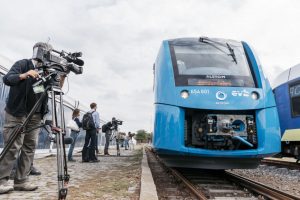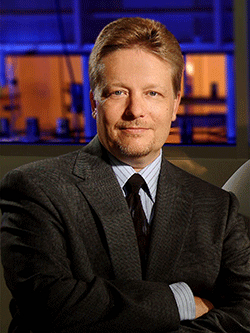 Let’s face it. Anyone can benefit from a boost in their cell phone’s battery life, with the use of social media apps like Facebook, Instagram, Twitter, and the daily connectedness of email, texting, FaceTime, and selfies, it’s a surprise if our cell phone batteries last a day—which most often they don’t. Cut to, Apple’s newly released smart battery case that extends the life of their latest iPhones: the XS and XR. (more…)
Let’s face it. Anyone can benefit from a boost in their cell phone’s battery life, with the use of social media apps like Facebook, Instagram, Twitter, and the daily connectedness of email, texting, FaceTime, and selfies, it’s a surprise if our cell phone batteries last a day—which most often they don’t. Cut to, Apple’s newly released smart battery case that extends the life of their latest iPhones: the XS and XR. (more…)
Perk up people, this is the Forbes list 30 under 30 in energy edition. According to Forbes, each year their reporters spend months combing through possible contestants. Questionnaires, online digging, contact recommendations, and a panel of expert judges all help sift through to the top remaining candidates.
This year, Forbes focused on the movers and shakers of the battery field. With a worldwide $200 billion a year investment in wind and solar power generation projects, the revolution in renewables, and the transition to low-carbon energy sources is undeniable. And for that reason, we highlight three—just the tip of the iceburg—from the top thirty list.
I don’t know what you were doing when you were 17, but Meghana Bollimpalli, a student at Central High School in Little Rock, Arkansas was inspired by a seminar on energy storage. Bollimpalli began working towards figuring out a way to make supercapacitors from cheaper materials. She discovered a mixture of tea powder, molasses, and tannin, with a pinch of phosphorous and nitrogen, could achieve the same performance as a platinum-based electrode, for just $1 each, taking home the 2018 Intel Foundation Young Scientist award. Not bad for a high school student. (more…)
Last week, we told you about California’s commitment to go 100 percent carbon-free by 2045. Well, it turns out the Golden State is in good company. Germany has welcomed two of their first, state-of-the-art hydrogen-powered trains, according to Ars Technica.
The trains are built to run a total of 62-miles throughout the windswept hills of Northern Germany before refueling. These cutting-edge trains, known as Coradia iLint trains, are the first of its kind — with 14 more hydrogen-powered trains expected to be delivered before 2021 by the French train-building company Alstom. A big step towards Germany’s goal to lower transportation-related emission. (more…)
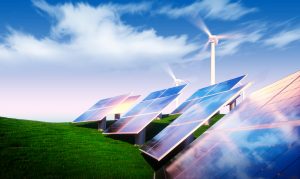 According to The Conversation, California Governor Jerry Brown has signed a new law committing to make the Golden State the state 100 percent carbon-free by 2045.
According to The Conversation, California Governor Jerry Brown has signed a new law committing to make the Golden State the state 100 percent carbon-free by 2045.
The new law is comprised of multiple targets, committing California to draw half its electricity from renewable sources by 2026, and then to 60 percent by 2030.
California’s mission to stop relying on fossil fuels for energy has been a longtime goal in the making. Since 2010, utility-scale solar and wind electricity in California increased from 3 percent to 18 percent in 2017, exceeding expected targets, due to solar prices drop in recent years. In 2011, Brown signed a law committing the state to derive a third of its energy from renewable sources like wind and solar power by 2020. And in 2017, about 56 percent of the power California generated came from non-carbon emitting sources, placing state over halfway to their goal for 2045.
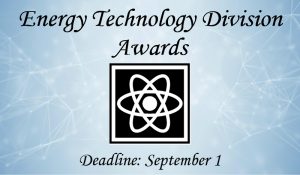 Nomination Deadlines: September 1, 2018
Nomination Deadlines: September 1, 2018
The ECS Energy Technology Division offers three awards annually and now is the time to consider a colleague, friend, mentor or protégé for recognition.
(Eric Wachsman will be presenting Safe, High-Energy-Density, Solid-State Li Batteries at AiMES 2018 in Cancun, Mexico on October 1, 2018.)
Behind the wheel of a ’68 Dodge Charger, Eric Wachsman discovered his passion for clean energy technology. He was a teenage boy in high school, and the open road was calling out to him.
“I just lived for cars,” says Wachsman, who serves on the ECS board of directors. “I could not wait to get my first car.”
So when he hit the road in his $1,500 hot rod, loaded with a holley double pumper carburetor, headers. “You name it.” He was thrilled. “That thing was the fastest thing around.”
However, life on the road soon came to a screeching halt.
By: Bob Marcotte, University of Rochester
 In order to power entire communities with clean energy, such as solar and wind power, a reliable backup storage system is needed to provide energy when the sun isn’t shining and the wind doesn’t blow.
In order to power entire communities with clean energy, such as solar and wind power, a reliable backup storage system is needed to provide energy when the sun isn’t shining and the wind doesn’t blow.
One possibility is to use any excess solar- and wind-based energy to charge solutions of chemicals that can subsequently be stored for use when sunshine and wind are scarce. At that time, the chemical solutions of opposite charge can be pumped across solid electrodes, thus creating an electron exchange that provides power to the electrical grid.
The key to this technology, called a redox flow battery, is finding chemicals that can not only “carry” sufficient charge, but also be stored without degrading for long periods, thereby maximizing power generation and minimizing the costs of replenishing the system.
Pulling Needles Out of Haystacks: With Computation, Researchers Identify Promising Solid Oxide Fuel Cell Materials
Posted on March 1, 2018 by Amanda Staller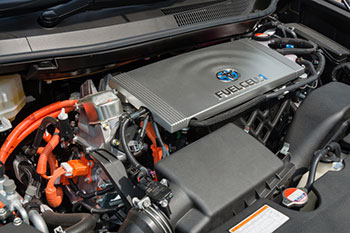 Using advanced computational methods, University of Wisconsin–Madison materials scientists have discovered new materials that could bring widespread commercial use of solid oxide fuel cells closer to reality.
Using advanced computational methods, University of Wisconsin–Madison materials scientists have discovered new materials that could bring widespread commercial use of solid oxide fuel cells closer to reality.
A solid oxide fuel cell is essentially an engine that provides an alternative way to burn fossil fuels or hydrogen to generate power. These fuel cells burn their fuel electrochemically instead of by combustion, and are more efficient than any practical combustion engine.
As an alternative energy technology, solid oxide fuel cells are a versatile, highly efficient power source that could play a vital role in the future of energy. Solid oxide fuel cells could be used in a variety of applications, from serving as a power supply for buildings to increasing fuel efficiency in vehicles.
However, solid oxide fuel cells are more costly than conventional energy technologies, and that has limited their adoption.
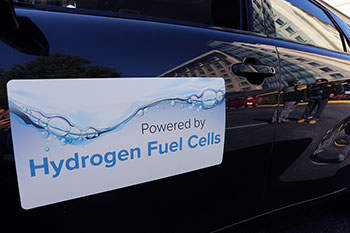 Fuel cells play a major role in creating a clean energy future, with a broad set of applications ranging from powering buildings to electrifying transportation. But, as with all emerging technologies, researchers have faced many barriers in developing affordable, efficient fuel cells and creating a way to cleanly produce the hydrogen that powers them.
Fuel cells play a major role in creating a clean energy future, with a broad set of applications ranging from powering buildings to electrifying transportation. But, as with all emerging technologies, researchers have faced many barriers in developing affordable, efficient fuel cells and creating a way to cleanly produce the hydrogen that powers them.
In a new Perspective article, published in the Journal of The Electrochemical Society, researchers are aiming to tackle a fundamental debate in key reactions behind fuel cells and hydrogen production, which, if solved, could significantly bolster clean energy technologies.
In the open access article, “Perspective—Towards Establishing Apparent Hydrogen Binding Energy as the Descriptor for Hydrogen Oxidation/Evolution Reactions,” Yushan Yan and his coauthors from the University of Delaware provide an authoritative overview of work done in the areas of hydrogen oxidation and evolution, present key questions for debate, and provide paths for future innovation in the field.
3 Plans to Avoid Blackouts Using 100% Renewable Energy
Posted on February 12, 2018 by Amanda Staller Researchers have proposed three different methods for providing consistent power in 139 countries using 100 percent renewable energy.
Researchers have proposed three different methods for providing consistent power in 139 countries using 100 percent renewable energy.
The inconsistencies of power produced by wind, water, and sunlight and the continuously fluctuating demand for energy often hinder renewable energy solutions. In a new paper, which appears in Renewable Energy, the researchers outline several solutions to making clean power reliable enough for all energy sectors—transportation; heating and cooling; industry; and agriculture, forestry, and fishing—in 20 world regions after all sectors have converted to 100 percent clean, renewable energy.
The researchers previously developed roadmaps for transitioning 139 countries to 100 percent clean, renewable energy by 2050 with 80 percent of that transition completed by 2030. The present study examines ways to keep the grid stable with these roadmaps.



